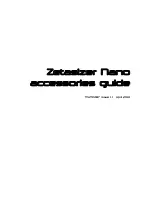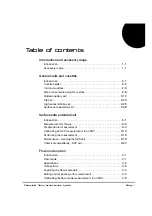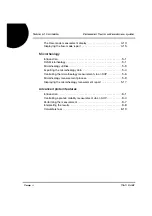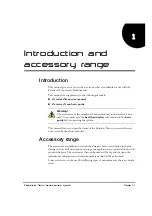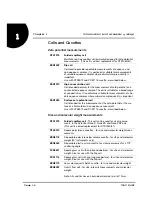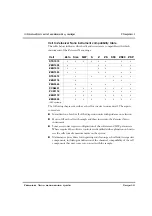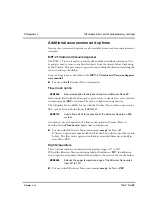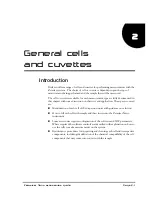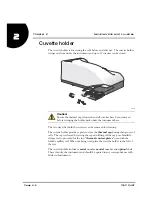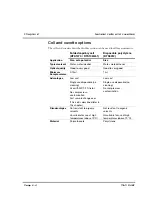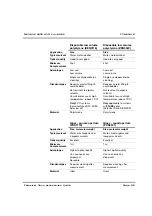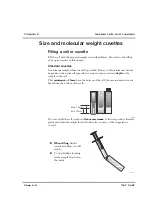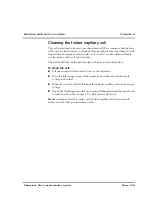
General cells and cuvettes
Chapter 2
Zetasizer Nano accessories guide
Page 2-5
Disposable low volume
polystyrene (ZEN0118)
Disposable low volume
polystyrene (ZEN0040)
Application
Size
Size
Typical solvent
Water, water/alcohol
Water, water/alcohol
Optical quality
Good to very good
Good to very good
Minimum
Sample volume
50μl
40μl
Advantages
Low cost
Low volume
Single use disposable (no
cleaning)
Low cost
Low volume
Single use disposable (no
cleaning)
Disadvantages
Requires careful filling to
avoid bubbles
Not resistant to organic
solvents
Unsuitable for use at high
temperatures. (above 70°C)
Only
90°C systems
(Zetasizer Nano S90, ZS90,
Zetasizer μV)
Requires careful filling to
avoid bubbles
Not resistant to organic
solvents
Unsuitable for use at high
temperatures. (above 70°C)
Only
applicable to systems
with
NIBS
optics
(Zetasizer Nano S/ZS/ZSP)
Material
Polystyrene
Polystyrene
Glass - square aperture
(PCS1115)
Glass - round aperture
(PCS8501)
Application
Size, molecular weight
Size, molecular weight
Typical solvent
Water, most organic and
inorganic solvents
Water, most organic and
inorganic solvents
Optical quality
Excellent
Excellent
Minimum
Sample volume
1ml
1ml
Advantages
Highest optical quality
Can use nearly any
dispersant
Reusable
Highest optical quality
Can use nearly any
dispersant
Disadvantages
Requires cleaning after
measurement
Requires cleaning after
measurement
Material
Glass
Glass
Summary of Contents for Zetasizer Nano Series
Page 2: ......
Page 3: ...Zetasizer Nano accessories guide MAN0487 Issue 1 1 April 2013...
Page 12: ...Chapter 1 Introduction and accessory range Page 1 6 MAN 0487...
Page 42: ...Chapter 2 General cells and cuvettes Page 2 30 MAN 0487...
Page 98: ...Chapter 5 Microrheology Page 5 20 MAN 0487...
Page 125: ......

